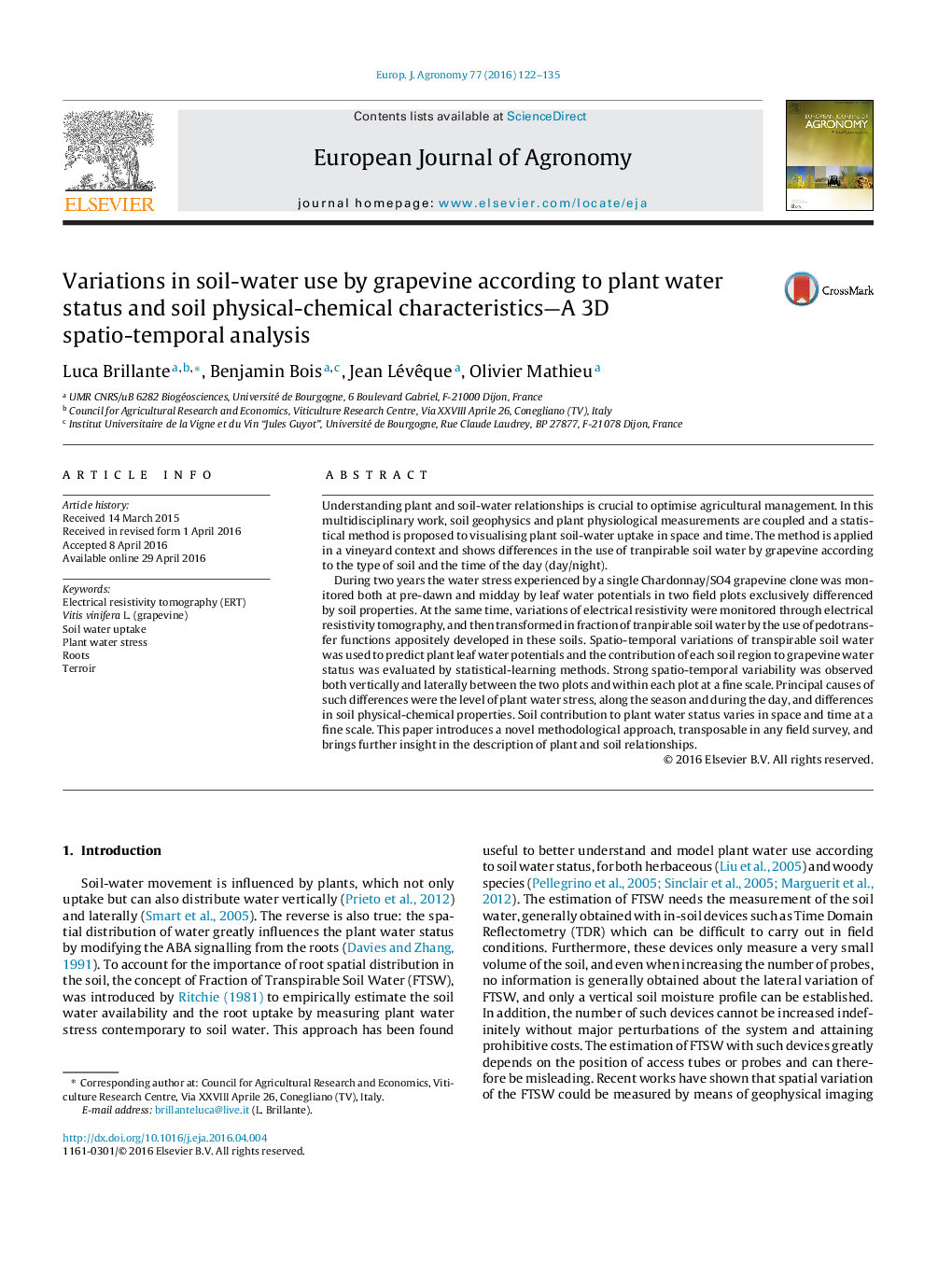| Article ID | Journal | Published Year | Pages | File Type |
|---|---|---|---|---|
| 4508738 | European Journal of Agronomy | 2016 | 14 Pages |
•A new approach is proposed to link soil water to plant water stress in space-time.•Using electrical resistivity tomography to spatialise transpirable soil water (FTSW).•Spatio-temporal contribution of soil pixels to plant water status is observed.•Differences in soil water uptake in two different terroirs with same plant material.•Space-time water uptake by vine shown depend on plant water stress, soil, day-night.
Understanding plant and soil-water relationships is crucial to optimise agricultural management. In this multidisciplinary work, soil geophysics and plant physiological measurements are coupled and a statistical method is proposed to visualising plant soil-water uptake in space and time. The method is applied in a vineyard context and shows differences in the use of tranpirable soil water by grapevine according to the type of soil and the time of the day (day/night).During two years the water stress experienced by a single Chardonnay/SO4 grapevine clone was monitored both at pre-dawn and midday by leaf water potentials in two field plots exclusively differenced by soil properties. At the same time, variations of electrical resistivity were monitored through electrical resistivity tomography, and then transformed in fraction of tranpirable soil water by the use of pedotransfer functions appositely developed in these soils. Spatio-temporal variations of transpirable soil water was used to predict plant leaf water potentials and the contribution of each soil region to grapevine water status was evaluated by statistical-learning methods. Strong spatio-temporal variability was observed both vertically and laterally between the two plots and within each plot at a fine scale. Principal causes of such differences were the level of plant water stress, along the season and during the day, and differences in soil physical-chemical properties. Soil contribution to plant water status varies in space and time at a fine scale. This paper introduces a novel methodological approach, transposable in any field survey, and brings further insight in the description of plant and soil relationships.
Graphical abstractFigure optionsDownload full-size imageDownload as PowerPoint slide
